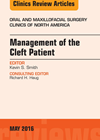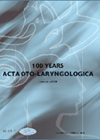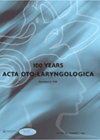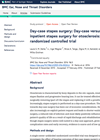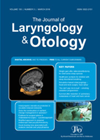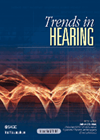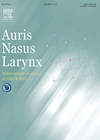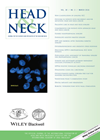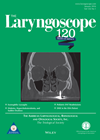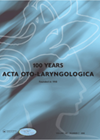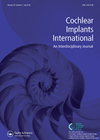
Journal Reviews
Management of the ear in cleft lip and palate
The management of patients with cleft lip and palate includes a focus on effective speech and language function. Poor eustachian tube function and middle ear dysfunction mean over 90% of children suffer from otitis media with effusion. This article provides...
Does cholesteatoma surgery affect school performance?
While much focus has been placed on short-term complications associated with cholesteatoma, a lack of knowledge remains about the impact suffering from cholesteatoma in childhood may have on educational outcome. The aim of the study was to investigate whether suffering...
MRI and the endolymphatic space
This is an interesting study which was performed to evaluate the endolymphatic space in patients with endolymphatic hydrops (EH), using MR imaging. Seven patients aged between 21–77 years; five female, two male with unilateral or bilateral symptoms of EH were...
Which bone conduction implant (BCI) device to use?
Bone conduction implants (BCI) are alternatives when the use and benefit of conventional, prosthetic equipment is limited or contraindicated in patients who suffer from conductive, mixed and single-sided deafness. They are broadly divided into two main groups delivering vibration directly...
Day care stapes surgery
This paper reports on a proposed unblinded, randomised controlled trial in which the hearing outcomes after inpatient stapes surgery will be compared with those after day case stapes surgery. The study is currently in the recruitment stage and plans to...
Evidence based outcomes for canal wall up, canal wall down and subsequent canal wall reconstruction for primary cholesteatoma
There has been a long standing controversy over whether to treat primary cholesteatoma with open or closed technique. The general consensus is that limited disease can be treated with closed technique whereas the canal wall down approach helps reduce recidivism...
Open hearing-aid fittings or closed
There is always a balance between different types of hearing aids and their advantages and disadvantages that influence choice of device and ultimately user preference. Personal choice also plays a role when deciding on behind the ear or in ear...
What are the non-inflammatory causes of a conductive loss?
This retrospective study looked at patients with an intact tympanic membrane with non-inflammatory causes – i.e. otitis media and cholesteotoma. They document their findings based on exploratory tympanotomy. They operated depending on the findings with either a stapedectomy or a...
Difficult consultations with HPV-positive oropharnyeal cancer patients
The aetiological role of human papillomavirus (HPV) in oropharyngeal squamous cell carcinoma (OPSCC) is well established, and its incidence has massively increased over the last decade, whilst the incidence of HPV-negative OPSCC is declining. Although we know that HPV-positive OPSCC...
Recovery rates in sudden sensorineural hearing loss
Sudden sensorineural hearing loss (SSNHL) is most commonly idiopathic, and is seen relatively frequently in ENT practice. Recovery spans a period of around 1-2 months, and ultimate outcomes are highly variable, from complete recovery to no detectable hearing. Although the...
Does a labyrinthine fistula in cholesteatoma surgery lead to hearing loss?
Thirty-five patients with labyrinthine fistula related to cholesteatoma were studied retrospectively. All patients underwent CT scans and preoperative hearing tests 1-2 weeks prior to surgery (averaged at 0.5, 1, 2, 3, 4, 8 kHz). All 35 patients underwent mastoid surgery,...
Can intraoperative electrically evoked auditory brainstem responses predict the outcome of cochlear implantation?
Electrophysiology during cochlear implant surgery remains an issue of debate among the various centres. In the present study, the latencies and quality of the eABR waveforms from 74 adult implanted patients were analysed. In addition, four children with severe cochlear...

